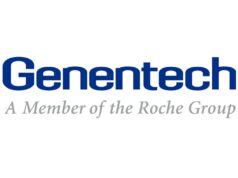 Thrombolytic Science (TSI) has announced progress with 10 patients enrolled in its prospective, randomised, multicentre phase 2 clinical trial, designed to confirm the safety and efficacy of the sequential dual-treatment regimen of low-dose tissue plasminogen activator (tPA) and HisproUK (TSI’s mutant prourokinase [proUK]) in 200 ischaemic stroke patients. The clinical trial is led by Diederik Dippel, co-director of the Erasmus MC Stroke Center in Rotterdam, The Netherlands.
Thrombolytic Science (TSI) has announced progress with 10 patients enrolled in its prospective, randomised, multicentre phase 2 clinical trial, designed to confirm the safety and efficacy of the sequential dual-treatment regimen of low-dose tissue plasminogen activator (tPA) and HisproUK (TSI’s mutant prourokinase [proUK]) in 200 ischaemic stroke patients. The clinical trial is led by Diederik Dippel, co-director of the Erasmus MC Stroke Center in Rotterdam, The Netherlands.
TSI also announced it has finalised the protocol for a multicentre phase 2 study in 100 patients with myocardial infarction (MI), or heart attack. The phase 2 MI trial will start enrolling patients in Ukraine the first half of 2020.
“We are on track with initiation and recruitment for both of our Phase 2 clinical trials, which aim to compare the TSI dual-therapy regimen versus the standards of care in each indication,” said Alexis Wallace, TSI co-founder and CEO. “We have fielded inquiries from potential pharmaceutical partners and look forward to continued dialogue as we progress our clinical programs to advance the treatment of stroke and heart attack.”
The phase 2 studies in patients with ischaemic stroke and MI follow a phase 1 study performed at the Centre for Human Drug Research (CHDR), in Leiden, The Netherlands, led by Koos Burggraaf that confirmed the safety and tolerability of TSI’s bio-inspired treatment regimen in healthy volunteers (n=26).
Both ischemic stroke and heart attack are triggered by a blood clot. To restore blood flow, the principal pharmacological treatment today consists of dissolving the clot, or thrombolysis, as quickly as possible by infusing a large dose of a single natural enzyme called tPA. Studies have shown, however, that natural thrombolysis is achieved by a sequence of tPA plus a second enzyme called proUK. “This system’s function is analogous to that of a car engine, where tPA is akin to the starter and proUK is the fuel,” says Victor Gurewich, TSI co-founder and scientific director. “As with this example, dissolving a blood clot effectively and safely requires both tPA and proUK in sequence.”












